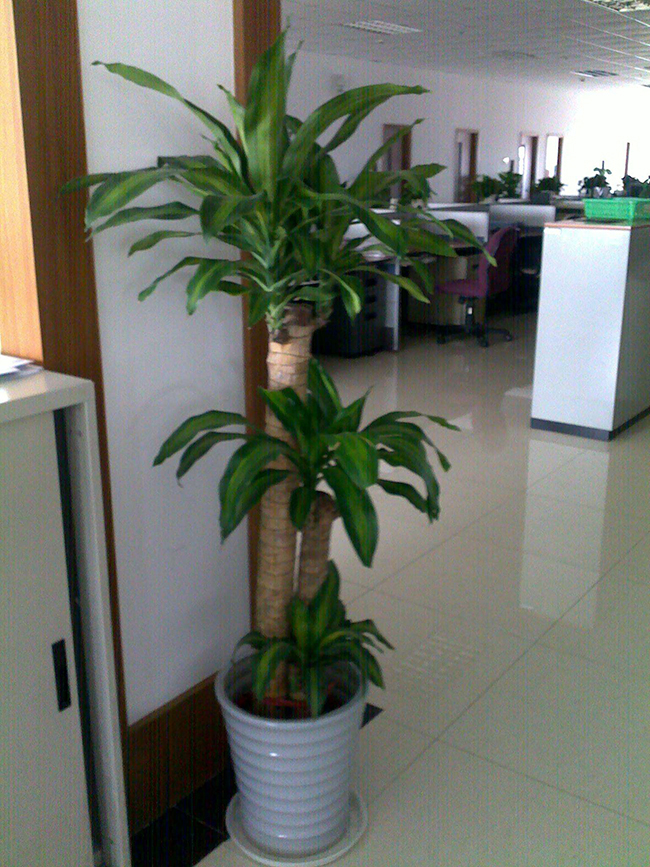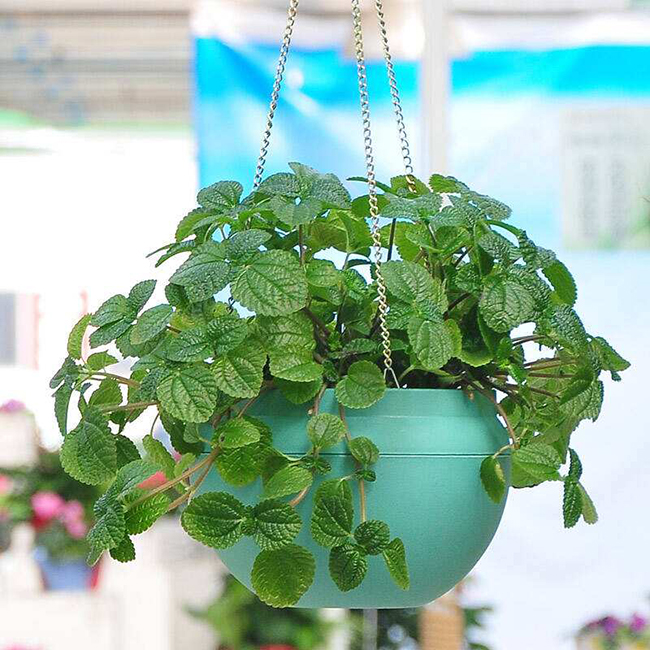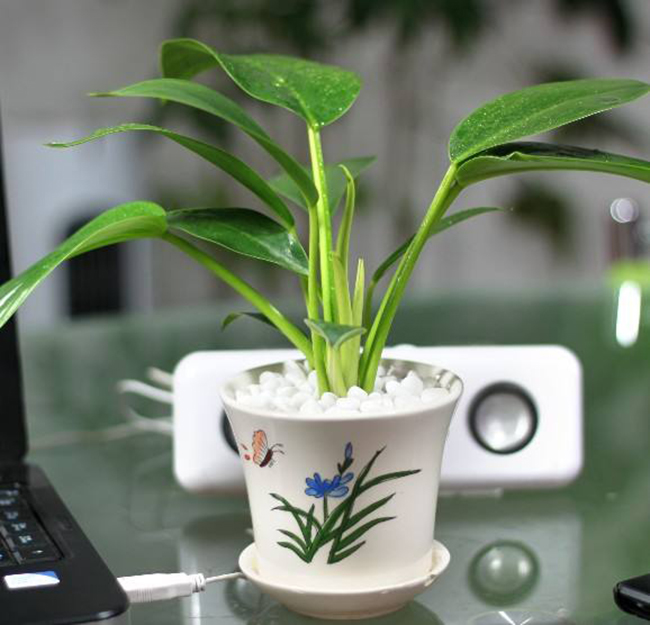Methods and matters needing attention of Brazilian wood culture
Morphological characteristics of Brazilian wood
Brazilian trees are evergreen trees with a height of more than 6m. The leaf cluster is born at the top of the stem, long 40~90cm, wide 6~10cm, wide linear, slightly obtuse, curved into a bow; leaf margin undulating, bright green, parallel veins, glossy, nearly without petiole. Panicle, flowers small, clustered, yellowish green, fragrant in the evening. The fruit is orange.
Brazilian wood growth environment
Brazilian wood likes a hot and humid climate. It is highly adaptable to light and can grow under a little shade or sunlight, but it is better to be exposed to sunlight in spring, autumn and winter, and shade or indoor ventilation in summer. Brazilian wood has strong vitality, needs only sunlight, air and very little water, and can live well with its own potential energy. Brazilian wood is resistant to drought and not to waterlogging. The growing season can be fully watered. Brazilian wood is afraid of cold, it should be kept in a sunny place indoors in winter and the temperature should be maintained at 5 ℃ ~ 10 ℃.

Main value of Brazilian wood
Brazilian wood is quite popular indoor large potted flowers and trees, especially in the wider living room, study, living room display, elegant style, simple, and with southern flavor. It is a beautiful, regular and world-famous new generation of indoor foliage plants.
Propagation method of Brazilian wood
Soil insertion method:
The soil cuttings cut the top branches of the old plants into small sections of 8-10 cm and inserted them into clean river sand to keep a certain degree of humidity to take root.
Water insertion:
Insert the cutter into 2-3 cm of water and change the new water frequently to keep the water quality clean. It can take root in 1 month.
Brazilian wood soil selection
It requires fertile soil and good drainage, which is suitable for indoor cultivation. The mixed soil of rotten leaf soil, culture soil and coarse sand is the best in potted plants. In the market, potted Brazilian wood is mostly made of fine sandy soil, which is conducive to plant rooting, but long-term use will not be conducive to plant growth due to lack of fertilizer, so it must be replaced with the above mixed soil. The basin must be changed every spring, the new plant changes the basin once a year, and the old plant changes the basin once every two years.
Matters needing attention in daily maintenance
1. Brazilian wood display
Brazilian wood needs bright light all the year round, with at least three hours of direct sunlight every day.
2. Fertilization of Brazilian wood
Organic fertilizer can be buried at the base or edge, and then liquid organic and inorganic mixed fertilizer (urea or potassium dihydrogen phosphate solution) can be applied half a month later. Extra-root topdressing can be carried out during the growing period, and leaves can be sprayed with 100 times diluted nutrient solution, once every half month. The amount of fertilizer applied in winter can be halved or stopped. The application of nitrogen fertilizer should not be too much, otherwise the golden markings of leaves are not obvious, which will affect the ornamental effect.
3. Brazilian wood watering
Brazilian wood needs less water, it is generally watered about once every 10 days, and the basin soil can be kept at semi-dry and semi-wet. You should not water too much to prevent the tree trunk from rotting. In addition, in the north, due to the dry climate, should often spray water to the leaves and the surrounding ground to improve the surrounding air humidity, in order to facilitate the growth of Brazilian wood.
4. Temperature and light of Brazilian wood
The suitable temperature for Brazilian wood growth is 20-30 ℃. Winter can pass the winter when the temperature is more than 10 ℃, the growth will stop when the temperature is too low, and chloasma will appear on the leaf tip and leaf edge. Brazilian wood prefers shade and grows well in bright scattered light. Avoid direct light in summer and keep it in a cool place. In autumn and winter, just put it in a sunny place indoors. When the light is too little, the leaves of Brazilian wood will be grayish green and the stripes are not clear, and the basal leaves will yellowing, especially the variegated leaf species will become lighter or disappear under the condition of low light for a long time, thus losing the ornamental value.
5. Prevention and control of Brazilian wood diseases and pests
There are few diseases and insect pests in Brazil, but the incidence is relatively high in recent years, which is mainly caused by moth pests from the origin hidden in the branches. Plants will be eroded by diseases and insect pests, such as loose bark, shedding leaves and so on. Insecticides can be sprayed on plant branches and then covered with plastic paper to suffocate eggs or larvae. You can also peel off some of the bark, pick out pests, and then spray drugs to prevent spread. Tobacco extract can also be sprayed. In addition, attention should be paid to keeping the leaf surface clean and properly ventilated to improve the small environment.
For the harm of leaf spot and anthrax, 1000 times of methyl topiramate wettable powder can be sprayed. Insect pests are harmful to shell insects and aphids and can be sprayed with 1000 times of omethoate emulsion.
How to cultivate Brazilian wood _ Brazilian wood culture methods and matters needing attention _ Brazilian wood picture
Brazilian wood contains the meaning of happiness, and people like to give it to friends to express good wishes. Brazilian wood is also a very good indoor potted plant, mostly built in office space. So how do you raise Brazilian wood? Let's take a look at the breeding methods and points for attention of Brazilian wood.
First, how to raise Brazilian wood
The Brazilian wood plant is graceful, neat and slightly shady. Like high temperature, below 13 ℃, the plant dormancy and stop growing. Like loose, well-drained soil; potted plants should be made of fertile soil rich in humus and good drainage, which can be made of rotten leaf soil and river sand. Brazilian wood is resistant to drought and not to waterlogging. The growing season can be fully watered. In winter, the room should have plenty of sunshine, and the temperature should be maintained at 5 ℃ ~ 10 ℃.
II. Culture methods of Brazilian wood
1. Soil: Brazilian wood is suitable for loose, well-drained, humus-rich sandy loam soil and avoid alkaline soil. Pot soil should use rotten leaf soil or peat soil, add about 1 to 4 river sand or perlite and a small amount of mature organic fertilizer. The soil is loose, well drained and rich in organic matter, which is beneficial to its growth.
2. Sunlight: Brazilian wood has a wide range of adaptation to light, but it is not resistant to strong light, especially from May to October, which will lead to yellowing of leaves or scorching of leaf tips. Although it is shady, but too shady will also make the leaf color dim, especially the variegated leaf varieties, the markings on the leaf surface are easy to disappear, reducing the ornamental value.
3. Temperature: the suitable temperature for Brazilian wood growth is 20 ℃ to 28 ℃, the dormancy temperature is 13 ℃, and the overwintering temperature is 5 ℃. If the temperature is too low, chloasma will appear at the tip and edge of the leaf, and in serious cases, the shoots or the whole plant will be damaged by freezing. Therefore, it is necessary to move to the greenhouse for maintenance in winter in the north. If it is placed indoors, it should be placed in a place with light, and it is better to keep it above 6 ℃ to 8 ℃ at room temperature.
4. Watering: the long-term maintenance of northern Brazilian wood is in spring, summer and autumn, watering every 2 to 3 days in sunny days, and spraying water to the leaves once or twice a day. It is appropriate to control the amount of watering after the end of autumn and keep the basin soil slightly wet. Watering should be controlled in winter, and the basin soil should be kept semi-dry and semi-wet, such as excessive watering will rot roots and scorch leaves.
5. Fertilization: Brazilian wood needs to consume some of its own nutrients in the process of growth, at this time, if it is not fertilized in time, it will cause insufficient stamina and gradual degradation. During the growing period, organic fertilizer was first applied at the base or edge, and then liquid fertilizer or compound fertilizer was applied once or twice every 15 to 20 days to ensure the luxuriant growth of branches and leaves. Fertilization should be thin fertilizer, do not thick fertilizer, fertilizer application period is from May to October every year. Stop fertilizing in winter and move indoors for the winter. For variegated varieties, attention should be paid to reducing the proportion of nitrogen fertilizer, so as not to cause excessive growth of leaves, and lead to dull or even disappear speckles.
6. Insect pests: the common pests of Brazilian wood are leaf spot and anthracnose, which can be sprayed with 1000 times of methyl topiramate wettable powder. Insect pests are harmful to shell insects and aphids and can be sprayed with 1000 times omethoate EC.
Matters needing attention in the Culture of Brazilian Wood
The main results are as follows: 1. Brazilian wood grows strongly and can form large plants. However, if the plant is too tall or the lower leaves fall off, it will affect the ornamental effect and need to be pruned. When pruning, if it is cut from the top of the plant or about 15 cm from the ground, it will sprout and grow new branches.
2. The overwintering temperature of Brazilian wood should be kept above 10 ℃, the cold resistance of Brazilian wood with silver thread is slightly stronger, and the temperature should not be lower than 8 ℃. Fertilizer application should be stopped after late August to enhance overwintering ability.
3. Brazilian wood prefers high humidity (70%-80%) environment. If the air is too dry and the leaf edge and tip are easy to curl when the new leaf is pulled out, the water spray on the leaf surface and its surrounding environment should be strengthened during the growth period. During the growth period, the city should pay attention to adequate water supply and keep the basin soil moist, but avoid stagnant water.
4. When the growth of the plant is too high and the lower part of the plant is empty, the overlong part can be cut off. After cutting off the stem, it will germinate new branches under the remaining section, thus forming an ideal plant type.
The breeding methods and matters needing attention of Brazilian wood have been introduced. Brazilian wood is more suitable for breeding in spacious areas. If the home or office space is small, it should be carefully considered.
Culture methods and matters needing attention of Brazilian wood
Brazilian wood is a kind of plant that likes high temperature and humid climate. If the temperature and humidity are suitable, Brazilian wood can grow all the year round. Brazilian wood has a strong ability to adapt to light and can grow in both sunlight and shelter. Brazilian wood has strong vitality, and sunlight, air and water are enough for it to grow healthily. The following editor will introduce the breeding methods of Brazilian wood and some matters needing attention.
Brazilian wood culture methods should first pay attention to the temperature and light, the temperature should be controlled between? 20 ℃ to 28 ℃. When the temperature is below 13 ℃, the Brazilian wood will go into dormancy, while when the temperature is below 5 ℃, the leaf tip and edge of the Brazilian wood will appear chloasma, which can lead to death. When Brazilian wood is placed indoors, it should be placed in a sunlit place.
Secondly, the culture method of Brazilian wood also needs to pay attention to the control of moisture and humidity. Brazilian wood does not need much water, but requires higher humidity. So we just need to keep the basin soil moist and often spray water to the leaves to increase the humidity of the surrounding air. It is worth noting that water should not be allowed to accumulate in the basin soil, which will cause the roots of Brazilian wood to rot.
The third point of the breeding method of Brazilian wood is to pay attention to soil and fertilizer. Brazilian wood is suitable for growing in the loose sandy loam soil of the Feiwo River. In addition, the Brazilian wood has to change the basin and soil once a year to keep the nutrients in the soil adequate. In general, organic fertilizer is applied at the base or edge of the growing period, and then liquid fertilizer is applied every 15 to 20 days to ensure the luxuriant growth of branches and leaves.
Brazilian wood culture methods also need to pay attention to the prevention of insect pests, because sometimes Brazilian wood leaves scorch and other phenomena, which is caused by drought, low temperature, watering, improper fertilization and so on. At this time, we should improve the methods of cultivation and management, pay more attention to the control of temperature and humidity, remove pests in time and apply some diluted pesticides.
Conclusion: the plant shape of Brazilian wood is very beautiful, and it suddenly appears to be of high-end atmosphere in the living room. The aroma of Brazilian wood is strong, if you are not used to the stronger fragrance, just put it in a spacious and ventilated place. Brazilian wood is a very stylish and elegant plant, with a charming southern flavor, is a well-known indoor foliage plant in the world. Have you learned the above methods of culturing Brazilian wood?
▽ latest information article ▽
◇ ▏ gardenia cultivation method ▏ European royal cross-stitch ▏ asparagus leaves yellowing how to ▏ modern abstract painting ▏◇◇ ▏ what plant absorbs formaldehyde ▏ wallpaper liquid wallpaper ▏ indoor plant picture and name ▏ Iris story ▏◇◇ ▏ cultivation method ▏ cross-embroidered annual ▏ cornflower flower language is what ▏ Chongqing blanket cleaning ▏◇◇ ▏ the best What is the fabric of cross-stitch brand ▏ chiffon ▏ what brand of duvet is good ▏ stone flower ▏◇◇ ▏ liquid wallpaper good ▏ cross-stitch brand ranking ▏ bedroom hand-painted wall picture ▏ lover grass ▏◇
- Prev

Culture methods and matters needing attention of drug-addicted weeds
Morphological characteristics of drug addicts, plant height 50 cm, stems and leaves with soapy fragrance, wheel umbels, lip-shaped lavender flowers, florescence from July to August. Heat-resistant and cold-resistant, drought-resistant, waterlogging-resistant and pruning-resistant. The Beginning of Winter pruned once before, can survive the winter safely. Drug addict grass is a kind of plant that is very hardy.
- Next

Gold diamond breeding methods and precautions
Golden Diamond Plant Introduction Golden Diamond belongs to Araceae plant, also known as Golden Diamond Green Velvet, Camptotheca acuminata, also known as Evil King, shade plant, strong vitality; to absorb various toxic gases as nutrients (SO2, SO3, NO, etc.), with the role of purifying the air, is a relatively popular indoor foliage plant
Related
- Fuxing push coffee new agricultural production and marketing class: lack of small-scale processing plants
- Jujube rice field leisure farm deep ploughing Yilan for five years to create a space for organic food and play
- Nongyu Farm-A trial of organic papaya for brave women with advanced technology
- Four points for attention in the prevention and control of diseases and insect pests of edible fungi
- How to add nutrient solution to Edible Fungi
- Is there any good way to control edible fungus mites?
- Open Inoculation Technology of Edible Fungi
- Is there any clever way to use fertilizer for edible fungus in winter?
- What agents are used to kill the pathogens of edible fungi in the mushroom shed?
- Rapid drying of Edible Fungi

